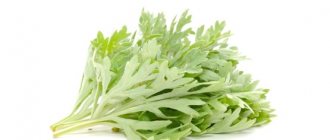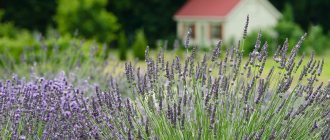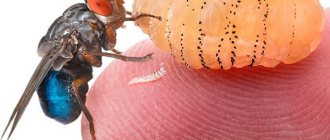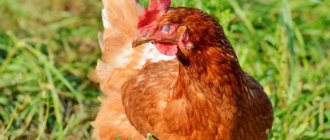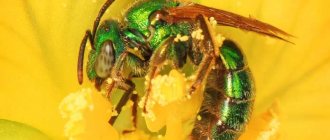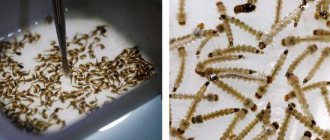Holidays at the dacha on warm summer evenings can easily be ruined by annoying insects: flies, midges, mosquitoes. Of course, you can buy various products that repel mosquitoes and other insects. But they often cause allergic reactions and redness of the skin in users. To prevent your outdoor activities from being spoiled by annoying insects, simply plant live repellents in your recreation area. These include: wormwood, basil, yarrow and others.
In this article we will look at what live repellents are, which plants repel mosquitoes and which ones attract them, what types of mint repel mosquitoes and much other useful information.
Herbs and plants that repel mosquitoes
Wormwood
To prevent work or relaxation in the garden from being spoiled by annoying mosquitoes, it is worth planting various plants and herbs on the site, which contain oils that keep mosquitoes at a distance. The most popular plants against mosquitoes and midges in the country are:
- wormwood _ This herb is a natural repellent, the smell of which is not tolerated by many insects, including mosquitoes. It contains: specific substances, such as: succinic, ascorbic, malic acids, tannins, absinthine, essential oils and others. That is why the plant has a characteristic bitter aroma. When planting in the garden to repel insects, wormwood is planted in groups. Such plantings look more impressive in flower beds;
- yarrow . It has long been an excellent protective agent against various insects. If you plant yarrow near the gazebo, it will repel not only mosquitoes, but also flies. But keep in mind, this plant is an excellent honey plant, so it attracts butterflies and bees. When planting in a flower bed, low-growing species of yarrow are used. It looks harmonious in rock gardens, on the lawn, in mixborders, ridges;
- meadowsweet . A beautiful perennial that smells especially fragrant when in bloom. The plant is completely unpretentious in care. The leaves emit an unobtrusive aroma that repels pests. The large flowers of meadowsweet are especially fragrant;
- basil _ This annual plant has a very pungent odor that keeps all garden midges at a certain distance. All varieties of basil are excellent repellents. In addition, this plant will decorate any garden plot with its colorful appearance.
Attention: Thai basil with narrow leaves and a cinnamon aroma is considered the best mosquito repellent.
Catnip or catnip
One of the advantages of this mint is that it grows like a weed, on its own. But we must give it its due: it does an excellent job of repelling mosquitoes. If you decide to rub your skin with the leaves or flowers of this plant to be safe, be careful - all the cats in the area will show increased attention to you. The reason for this is the substance nepetalactone, which this plant is rich in. It is also the source of the lemon aroma characteristic of this variety of mint.
Bush plants
Black elderberry
Various shrubs that repel pests with their aroma will help prevent the bites of flies, gnats and mosquitoes while relaxing in the garden. These include:
- black elderberry . A very elegant bush that is especially attractive during flowering. It also looks beautiful in flower beds in the fall, when black bunches of berries hang on it against a background of red foliage. This plant is suitable for arranging a hedge, as it is easy to give it the desired shape. Black elderberry repels with its aroma all malicious insects, including mosquitoes. The main thing when planting it is to take into account the direction of the wind so that the smell spreads in the right direction;
- castor bean Despite the fact that the plant is widely used by gardeners when decorating their garden plots, it has very poisonous seeds. Outwardly, it resembles a small palm tree. It has large carved leaves and bright flowers. Mosquitoes, midges and flies cannot stand its aroma;
- common bird cherry . Characterized by unique phytoncidal properties. When blooming in spring, it fills gardens with a pleasant fragrance. In autumn, medicinal berries ripen on the bushes. If you make a small planting at the edge of the bird cherry plot, flies, mosquitoes and other midges will not fly into it.
Castor bean
Peppermint
Since ancient times, our ancestors planted peppermint near windows and entrance doors to the house because this plant repels mosquitoes well. It is also well known to everyone that mint is one of the most popular medicinal plants. It is also widely used in cooking and cosmetology. Peppermint produces the strongest menthol aroma if it grows in loose, fertile soils in sunny corners of the garden. But it can also grow in the shade, although the smell and repelling mosquitoes will be weaker.
What Attracts Mosquitoes
Yarrow
Mosquitoes and other insects are attracted to shady and damp places. If your garden is overgrown, there are a lot of trees, shrubs and moisture, expect an invasion of bloodsuckers. To reduce their invasion, you should avoid planting bushes and tall plants in large numbers. When mowing the lawn, it is recommended to remove the grass immediately. Attracts insects and large amounts of moisture. That is why gardeners recommend watering plants at the roots so that there are no puddles in the yard.
Attention: in windy and sunny areas there are significantly fewer insects.
In conclusion, it is worth noting that mosquito repellent plants in the country will help to beautifully decorate any recreation area if you use them in a varied assortment. For example, elderberry, yarrow, lavender and wormwood look quite original and impressive in a flowerbed.
As you can see, you can make a flower garden not only aesthetically pleasing and fragrant, but also useful if you choose the right shrubs, herbs and flowers. Thus, in your garden plot you can significantly reduce the number of flies, mosquitoes and gnats that spoil your holiday with their buzzing and biting.
Salvia officinalis
Hippocrates called this plant “sacred grass.” Its use in medicine is still so widespread today that there seem to be far fewer diseases that it does not cure than those that it does. It has long been noticed in gardening that mosquitoes do not favor planting medicinal sage. More precisely, its tart aroma does not allow insects to detect the smell of a person near the plant. Salvia officinalis is a perennial plant. It grows in one place without transplanting for 8 years. Loves neutral acid soil and good light.
Tansy
Perennial herbaceous plant of forest and forest-steppe zones. It quickly clogs cultivated meadows and pastures, therefore, you need to be very careful when growing tansy in the garden. This poisonous plant is often used in folk medicine for the treatment and prevention of various ailments. It has a characteristic pungent odor that repels mosquitoes.
Shrubs
Shrub repellents repel mosquitoes and other pests. This method is used by residents of many countries. But in Russia, only a few types of bushes are planted on a summer cottage or local area:
- Rosemary bushes. Some summer residents plant this vegetation annually. After all, these bushes emit a peculiar smell, which contains notes of lemon, camphor, as well as pine and eucalyptus.
- Bird cherry tree or bush. The height of the bush reaches 50–60 cm. The first flowers appear in May or June. It all depends on the conditions in which the bird cherry is grown.
It is not worth planting shrubs near the house, since the rich aroma can cause headaches or other problems.
Compatibility
Before choosing repellent plants that are suitable for your local area or summer cottage, you need to consider their compatibility with a variety of crops. There are many tables on the Internet that indicate compatibility.
- Tomatoes and strawberries (strawberries) are planted next to calendula.
- Cabbage is planted next to thyme or rosemary.
- Peppers and tomatoes are combined with basil.
Scientists and experienced summer residents recommend planting bird cherry and fragrant flowers near the house. With the help of bird cherry you can get rid of imagoes and pupae of blood-sucking insects. Flowers will enhance the effect and repel other pests from the area. To enhance the effect, walnuts and shrubs with a rich aroma are planted next to the fence. This method allows you to create a buffer zone that blood-sucking insects, midges and other pests cannot overcome.
Making homemade herbal mosquito repellents
Knowing which plants can repel mosquitoes, you can prepare effective remedies from them at home.
Aerosol with wheatgrass decoction
When pulling out such a malicious weed as wheatgrass at the dacha, you need to collect its roots. After thoroughly cleaning them from dirt, they are crushed and placed in a pan of water. For one and a half liters of liquid you need to take a handful of raw materials. The water is brought to a boil three times and cooled. If such a decoction is applied to all exposed areas of the body, they will be protected for some time from attacks by midges and mosquitoes. You can use wormwood roots instead of wheatgrass.
Wormwood juice, which is mixed in equal proportions with 6% table vinegar, repels bloodsuckers well. Crushed flowers and leaves of bird cherry are used for the same purpose.
Sagebrush
Mint, the leaves of which are crushed and mixed with onion pulp and grated sorrel roots, will help relieve inflammation and itching that appears after bites. Quick relief comes by applying grated potatoes or a soda solution to the swelling. You can wipe it with lemon juice.
Dried tansy is tied into bundles and hung near the window so that midges do not fly inside the room, scared away by the unpleasant smell. You can also take wormwood or yarrow. Mosquitoes don't like the smell of geranium, so the best place for it is on the windowsill. Powdered pyrethrum is scattered indoors in secluded places. Flying bloodsuckers do not fly inside, since this product has a detrimental effect on them, while remaining harmless to humans.
Ageratum
Many commercial mosquito repellents use coumarin, a substance secreted by the annual plant Ageratum. Delicate small ornamental bushes will decorate your flower beds and provide reliable protection from annoying insects. However, you should not rub your skin with ageratum leaves and flowers. This may cause allergies. Ageratum is a picky plant; it is content with poor soils.
And if they bit
When protective measures are not taken in time, a mosquito bite simply cannot be avoided. The bite of this insect entails local pain and itching, which traditional medicine also knows how to get rid of.
To stop the wound from itching, lubricate it with a solution of baking soda at a rate of 0.5 tsp. soda per 250 ml of water. A weak solution of potassium permanganate or ammonia (1:1 with water) will relieve itching.
The pain from a mosquito bite will be relieved by slightly mashed leaves of plantain, mint, bird cherry, and parsley.
And if there is no vegetable garden under the window, and there is neither manganese nor alcohol at hand, then treat the bite areas with regular kefir or sour cream.
There are even more methods for treating mosquito bites than methods for scaring away these annoying blood lovers. But it’s better to prevent than to treat, isn’t it?!
Source
Lemon verbena
Lemon verbena.
© Marisa Esteban Evergreen shrub with a large crown. It is popularly considered a magical plant that can protect against the evil eye and damage. But today, of course, it is used more in cooking, cosmetology and medicine than in white magic rituals. It has a pleasant smell that mosquitoes do not want to be friends with. It also repels other insects - a dried verbena sprig is often placed in a closet as a preventative against moths.
Trees
Some trees can also protect you from mosquitoes:
- Walnut;
- begonia catalpa;
- catambra.
The last two actually belong to the same species, Catalpa begoniasis. Katambra is just a variety. But this variety contains 4 times more catalpol, a repellent substance.
On a note!
Trees are most often not compatible with any other plants. Catalpa is planted along roads as an ornamental plant. This is a southern tree that is not suitable for northern regions.
The same situation is with walnuts. Its place of growth is the southern regions of Russia. Only wild barley and dogwood grow well under nut trees.


